 W
WCybernetics is a transdisciplinary approach for exploring regulatory and purposive systems—their structures, constraints, and possibilities. The core concept of the discipline is circular causality or feedback—that is, where the outcomes of actions are taken as inputs for further action. Cybernetics is concerned with such processes however they are embodied, including in environmental, technological, biological, cognitive, and social systems, and in the context of practical activities such as designing, learning, managing, and conversation.
 W
WThe American Society for Cybernetics (ASC) is an American non-profit scholastic organization for the advancement of cybernetics as a science, a discipline, a meta-discipline and the promotion of cybernetics as basis for an interdisciplinary discourse. The society does this by developing and applying cybernetics’ concepts which are presented and published via its conferences and peer-reviewed publications. As a meta-discipline, it creates bridges between disciplines, philosophies, sciences, and arts.
 W
WA cardiac pacemaker, is a medical device that generates electrical impulses delivered by electrodes to cause the heart muscle chambers to contract and therefore pump blood; by doing so this device replaces and/or regulates the function of the electrical conduction system of the heart.
 W
WIn developmental psychology and moral, political, and bioethical philosophy, autonomy is the capacity to make an informed, uncoerced decision. Autonomous organizations or institutions are independent or self-governing. Autonomy can also be defined from a human resources perspective, where it denotes a level of discretion granted to an employee in his or her work. In such cases, autonomy is known to generally increase job satisfaction. Self-actualized individuals are thought to operate autonomously of external expectations. In a medical context, respect for a patient's personal autonomy is considered one of many fundamental ethical principles in medicine.
 W
WThe term autopoiesis refers to a system capable of reproducing and maintaining itself by creating its own parts and eventually further components. The original definition can be found in the 1972 publication Autopoiesis and Cognition: The Realization of the Living by Chilean biologists Humberto Maturana and Francisco Varela to define the self-maintaining chemistry of living cells. Since then the concept has been also applied to the fields of cognition, systems theory, architecture and sociology.
 W
WA Braitenberg vehicle is a concept conceived in a thought experiment by the Italian-Austrian cyberneticist Valentino Braitenberg. The book models the animal world in a minimalistic and constructive way, from simple reactive behaviours through the simplest vehicles, to the formation of concepts, spatial behaviour, and generation of ideas.
 W
WA centrifugal governor is a specific type of governor with a feedback system that controls the speed of an engine by regulating the flow of fuel or working fluid, so as to maintain a near-constant speed. It uses the principle of proportional control.
 W
WA cochlear implant (CI) is a surgically implanted neuroprosthetic device to provide a person with moderate to profound sensorineural hearing loss a modified sense of sound. CI bypasses the normal acoustic hearing process to replace it with electric signals which directly stimulate the auditory nerve. A person with a cochlear implant receiving intensive auditory training may learn to interpret those signals as sound and speech. However, one third of deaf children do not develop language if they are on a CI program alone and have no sign language input.
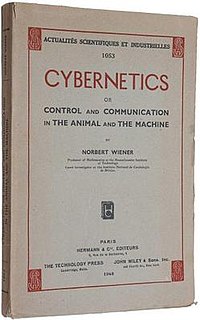 W
WCybernetics: Or Control and Communication in the Animal and the Machine is a book written by Norbert Wiener and published in 1948. It is the first public usage of the term "cybernetics" to refer to self-regulating mechanisms. The book laid the theoretical foundation for servomechanisms, automatic navigation, analog computing, artificial intelligence, neuroscience, and reliable communications.
 W
WCybertext is the organization of text in order to analyze the influence of the medium as an integral part of the literary dynamic, as defined by Espen Aarseth in 1997. Aarseth defined it as a type of ergodic literature where user traverses the text by doing non-trivial work.
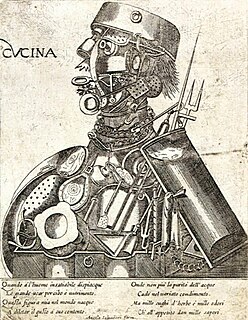 W
WA cyborg, a portmanteau of "cybernetic organism", is a being with both organic and biomechatronic body parts. The term was coined in 1960 by Manfred Clynes and Nathan S. Kline.
 W
WCyborg anthropology is a discipline that studies the interaction between humanity and technology from an anthropological perspective. The discipline is relatively new, but offers novel insights on new technological advances and their effect on culture and society.
 W
WDialogs on the Atomic Resurrection, the Impossibility Theory, Philosophical Benefits of Cannibalism, Sadness in a Test Tube, Cybernetic Psychoanalysis, Electrical Metempsychosis, Evolutionary Feedbacks, Cybernetic Eschatology, Personalities of Electrical Networks, Perversity of Electrobrains, Eternal Life in a Box, Construction of Geniuses, Epilepsy of Capitalism, Governance Machines, Design of Social Systems — is a collection of philosophical essays by Stanisław Lem.
 W
WThe Dream of Reality: Heinz von Foerster's Constructivism is a book by Lynn Segal first published in 1986. Segal, a licensed clinical social worker, examines the constructivist epistemology of physicist and philosopher Heinz von Foerster. Originally intended as a transcription of von Foerster's lectures, the book evolved into Segal's interpretation of von Foerster's constructivism written in everyday language.
 W
WDualism in cybernetics refers to systems or problems in which one or more intelligent adversaries attempt to exploit the weaknesses of the investigator. Examples could include a game-playing opponent, adversarial law, evolutionary systems of predator/parasite and prey/host, or politics/enslavement attempts.
 W
WMick Ashby's ethical regulator theorem builds upon the good regulator theorem, which is ambiguous because being good at regulating does not imply being good ethically. "The ethical regulator theorem claims that the following nine requisites are necessary and sufficient for a cybernetic regulator to be both effective and ethical:Purpose expressed as unambiguously prioritized goals. Truth about the past and present. Variety of possible actions. Predictability of the future effects of actions. Intelligence to choose the best actions. Influence on the regulated system. Ethics expressed as unambiguously prioritized rules. Integrity of all subsystems. Transparency of ethical behavior.
 W
WAn eyeborg or eye-borg is a body modification apparatus which fits on the wearer's head, and is designed to allow people to perceive color through sound waves. It works with a head-mounted antenna that senses the colors directly in front of a person, and converts them in real-time into sound waves through bone conduction.
 W
WThe Gaia Paradigm, also known as the Gaia theory or the Gaia principle, proposes that living organisms interact with their inorganic surroundings on Earth to form a synergistic and self-regulating, complex system that helps to maintain and perpetuate the conditions for life on the planet.
 W
WIn computer science and operations research, a genetic algorithm (GA) is a metaheuristic inspired by the process of natural selection that belongs to the larger class of evolutionary algorithms (EA). Genetic algorithms are commonly used to generate high-quality solutions to optimization and search problems by relying on biologically inspired operators such as mutation, crossover and selection.
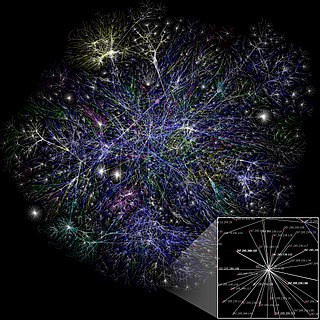 W
WThe global brain is a neuroscience-inspired and futurological vision of the planetary information and communications technology network that interconnects all humans and their technological artifacts. As this network stores ever more information, takes over ever more functions of coordination and communication from traditional organizations, and becomes increasingly intelligent, it increasingly plays the role of a brain for the planet Earth.
 W
WThe Homeostat is one of the first devices capable of adapting itself to the environment; it exhibited behaviours such as habituation, reinforcement and learning through its ability to maintain homeostasis in a changing environment. It was built by William Ross Ashby in 1948 at Barnwood House Hospital. After a few technical hiccups with short-circuits causing burn-outs, the homeostat was finally completed on 16 March 1948. It was an adaptive ultrastable system, consisting of four interconnected Royal Air Force bomb control units with inputs, feedback, and magnetically driven, water-filled potentiometers. It illustrated his law of requisite variety — automatically adapting its configuration to stabilize the effects of any disturbances introduced into the system.
 W
WThe Human Use of Human Beings is a book by Norbert Wiener, the founding thinker of cybernetics theory and an influential advocate of automation; it was first published in 1950 and revised in 1954. The text argues for the benefits of automation to society; it analyzes the meaning of productive communication and discusses ways for humans and machines to cooperate, with the potential to amplify human power and release people from the repetitive drudgery of manual labor, in favor of more creative pursuits in knowledge work and the arts. The risk that such changes might harm society is explored, and suggestions are offered on how to avoid such risk.
 W
WIntelligence amplification (IA) refers to the effective use of information technology in augmenting human intelligence. The idea was first proposed in the 1950s and 1960s by cybernetics and early computer pioneers.
 W
WThe International Society for Computational Biology Student Council (ISCB-SC) is a dedicated section of the International Society for Computational Biology created in 2004. It is composed by students from all levels in the fields of bioinformatics and computational biology. The organisation promotes the development of the students' community worldwide by organizing different events including symposia, workshops, webinars, internship coordination and hackathons. A special focus is made on the development of soft skills in order to develop potential in bioinformatics and computational biology students around the world.
 W
WThe Ladybird of Szeged or Ladybug of Szeged is an early robot which was developed in Hungary at the Cybernetics Laboratory of the University of Szeged (SZTE) between 1956 and 1957. The roughly hemispherical machine has a red shell with black dots, resembling a ladybird, hence its name. The Ladybird is one of the first Hungarian robots, and the first robotic animal ever constructed. It was designed and built by Dr. Dániel Muszka, with the main intention of emulating Pavlovian conditional reflexes in a machine.
 W
WMarch of the Machines: Why the New Race of Robots Will Rule the World, published in paperback as March of the Machines: The Breakthrough in Artificial Intelligence (2004), is a book by Kevin Warwick. It presents an overview of robotics and artificial intelligence (AI), often focusing on anecdotes of Warwick's own work, and then imagines future scenarios. In particular, Warwick finds it likely that such AIs will become smart enough to replace humans, and humans may be unable to stop them.
 W
WMetadesign is an emerging conceptual framework aimed at defining and creating social, economic and technical infrastructures in which new forms of collaborative design can take place. It consists of a series of practical design-related tools for achieving this.
 W
WNegative feedback occurs when some function of the output of a system, process, or mechanism is fed back in a manner that tends to reduce the fluctuations in the output, whether caused by changes in the input or by other disturbances.
 W
WNetwork science is an academic field which studies complex networks such as telecommunication networks, computer networks, biological networks, cognitive and semantic networks, and social networks, considering distinct elements or actors represented by nodes and the connections between the elements or actors as links. The field draws on theories and methods including graph theory from mathematics, statistical mechanics from physics, data mining and information visualization from computer science, inferential modeling from statistics, and social structure from sociology. The United States National Research Council defines network science as "the study of network representations of physical, biological, and social phenomena leading to predictive models of these phenomena."
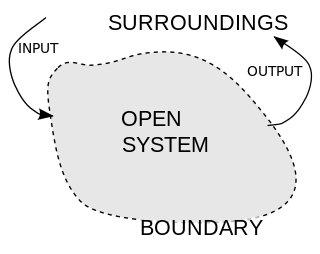 W
WAn open system is a system that has external interactions. Such interactions can take the form of information, energy, or material transfers into or out of the system boundary, depending on the discipline which defines the concept. An open system is contrasted with the concept of an isolated system which exchanges neither energy, matter, nor information with its environment. An open system is also known as a flow system.
 W
WPositive feedback is a process that occurs in a feedback loop which exacerbates the effects of a small disturbance. That is, the effects of a perturbation on a system include an increase in the magnitude of the perturbation. That is, A produces more of B which in turn produces more of A. In contrast, a system in which the results of a change act to reduce or counteract it has negative feedback. Both concepts play an important role in science and engineering, including biology, chemistry, and cybernetics.
 W
WProject Cybersyn was a Chilean project from 1971 to 1973 during the presidency of Salvador Allende aimed at constructing a distributed decision support system to aid in the management of the national economy. The project consisted of four modules: an economic simulator, custom software to check factory performance, an operations room, and a national network of telex machines that were linked to one mainframe computer.
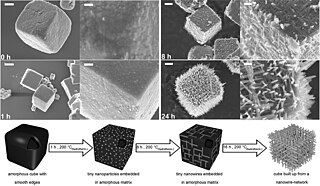 W
WSelf-organization, also called spontaneous order, is a process where some form of overall order arises from local interactions between parts of an initially disordered system. The process can be spontaneous when sufficient energy is available, not needing control by any external agent. It is often triggered by seemingly random fluctuations, amplified by positive feedback. The resulting organization is wholly decentralized, distributed over all the components of the system. As such, the organization is typically robust and able to survive or self-repair substantial perturbation. Chaos theory discusses self-organization in terms of islands of predictability in a sea of chaotic unpredictability.
 W
WIn cybernetics and control theory, a setpoint is the desired or target value for an essential variable, or process value of a system. Departure of such a variable from its setpoint is one basis for error-controlled regulation using negative feedback for automatic control. The set point is usually abbreviated to SP, and the process value is usually abbreviated to PV.
 W
WSpiNNaker is a massively parallel, manycore supercomputer architecture designed by the Advanced Processor Technologies Research Group (APT) at the Department of Computer Science, University of Manchester. It is composed of 57,600 processing nodes, each with 18 ARM9 processors and 128 MB of mobile DDR SDRAM, totalling 1,036,800 cores and over 7 TB of RAM. The computing platform is based on spiking neural networks, useful in simulating the human brain.
 W
WA superorganism or supraorganism is a group of synergetically interacting organisms of the same species. A community of synergetically interacting organisms of different species is called a holobiont.
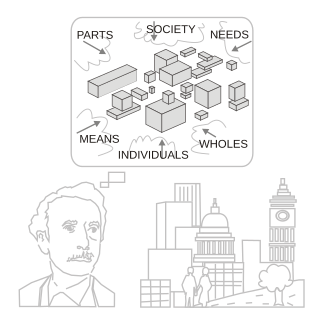 W
WSystems science is an interdisciplinary field that studies the nature of systems—from simple to complex—in nature, society, cognition, engineering, technology and science itself. To systems scientists, the world can be understood as a system of systems. The field aims to develop interdisciplinary foundations that are applicable in a variety of areas, such as psychology, biology, medicine, communication, business management, technology, computer science, engineering, and social sciences.
 W
WWorkplace robotics safety is an aspect of occupational safety and health when robots are used in the workplace. This includes traditional industrial robots as well as emerging technologies such as drone aircraft and wearable robotic exoskeletons. Types of accidents include collisions, crushing, and injuries from mechanical parts. Hazard controls include physical barriers, good work practices, and proper maintenance.
 W
W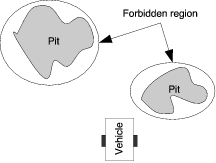 W
W W
W